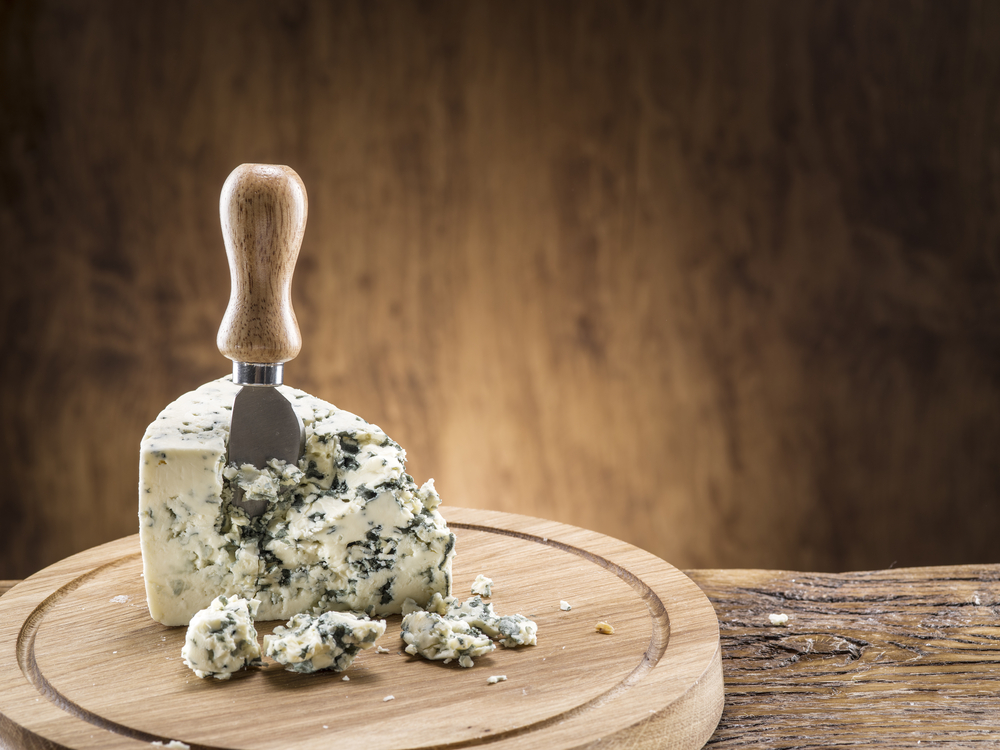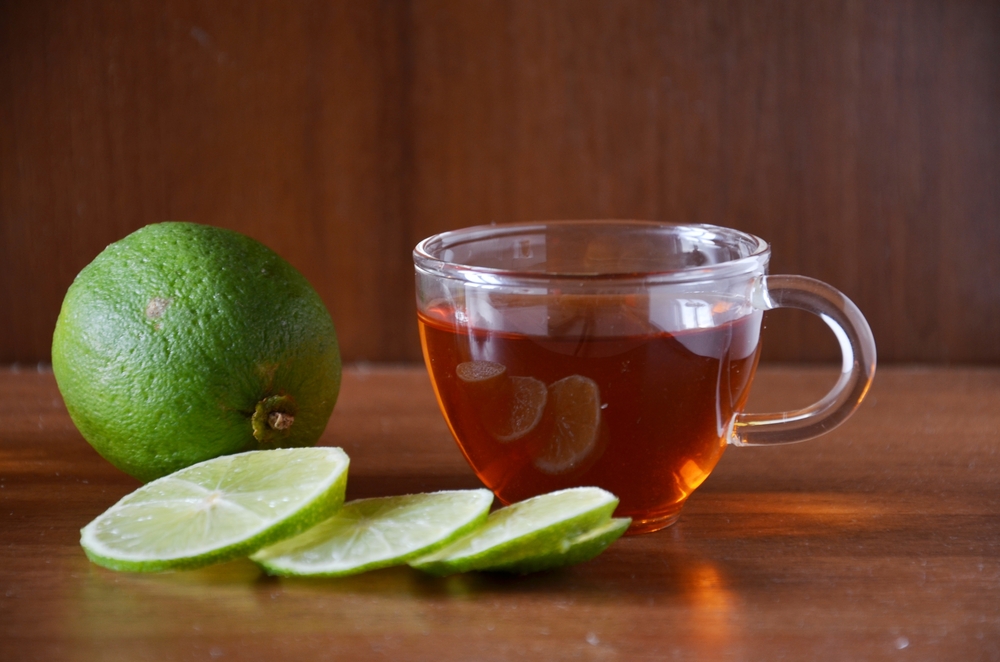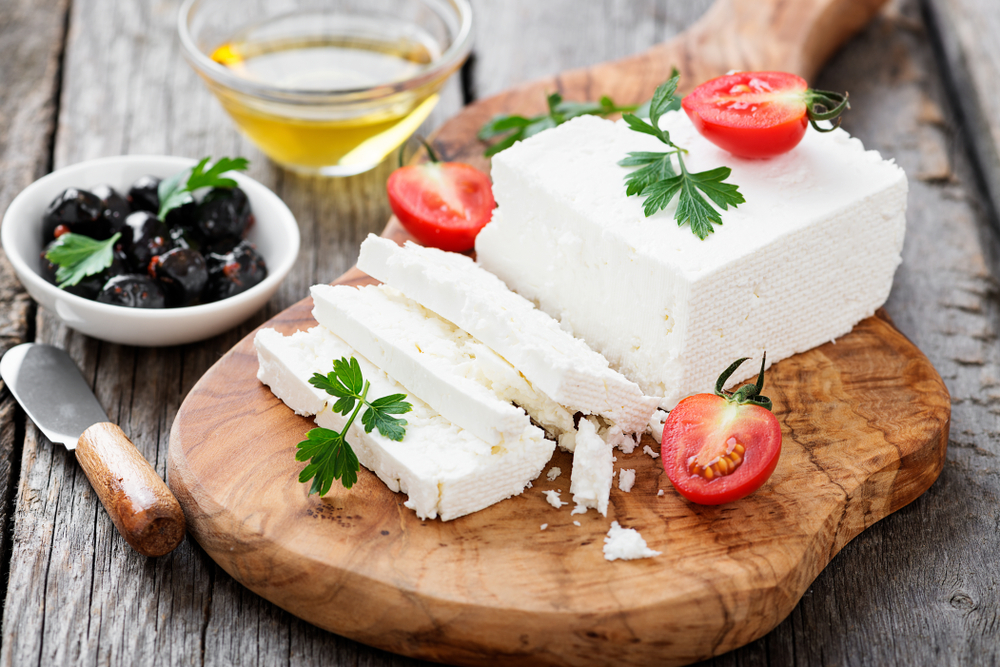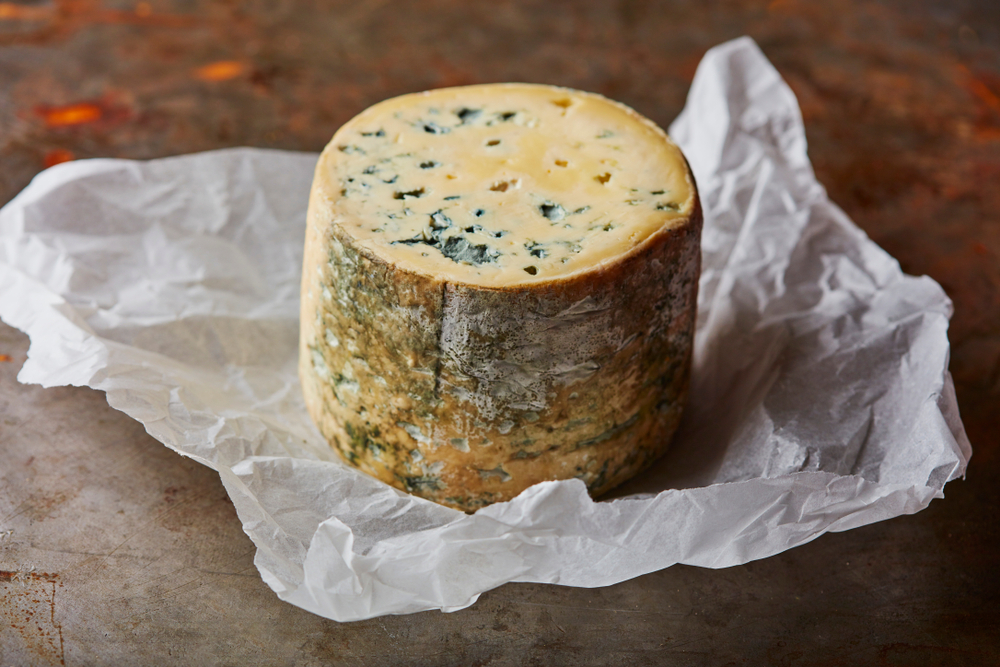Bleu cheese is an acquired taste for many. It’s characteristic blue, grey, and white hues are enough to make anyone rethink eating this ripe cheese. Yet, some people simply can’t live without the savory flavor of bleu cheese, either.
Some good substitutes for bleu cheese include other types of cheeses like gorgonzola, roquefort, stilton, Danish blue, Maytag blue, feta, cheddar, or parmesan.
Each of these bleu cheese alternatives has their own characteristic taste, smell, and feel. Yet, they are all interchangeable for bleu cheese for one reason or another. Let’s take a look at how these popular bleu cheese replacements measure up below.
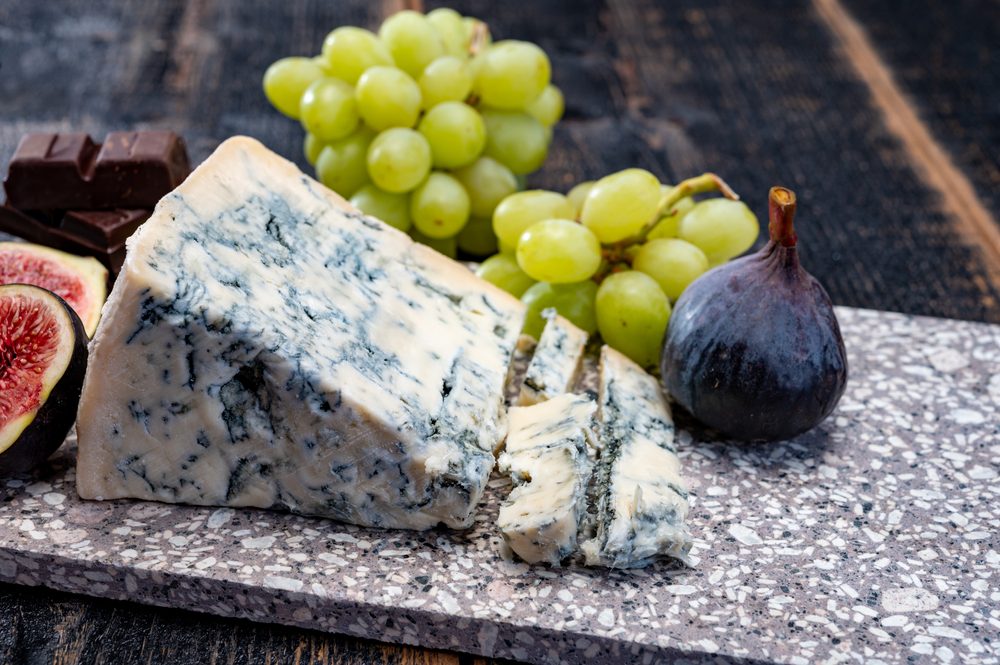
Common Bleu Cheese Alternatives
There are few cheeses that have the same taste and feel as bleu cheese. After all, it takes a long time for bleu cheese to ripen to perfection. However, the following bleu cheese alternatives are the closest you’ll find in comparison
1. Gorgonzola
As an actual type of bleu cheese, gorgonzola is made from unpasteurized cow’s milk. It is salty, pungent, and an almost identical replica of bleu cheese. There are two varieties of gorgonzola cheese, which are separated based on the amount of time they’ve aged.
Gorgonzola Dolce is a younger version, while Gorgonzola Piccante is an aged variant. The younger is creamy in texture with a soft feel, while the aged version is sharper in taste. Gorgonzola pairs well with grapes, olives, and other charcuterie board items, just like bleu cheese.
2. Roquefort
Made from sheep milk and considered to be a delicacy in many areas, roquefort is an old age cheese. Its deep blue veins and pungent smell remind many of bleu cheese, so much so that they are often confused for one another. It is sharp and tangy with an intense flavor profile, so a little goes a long way.
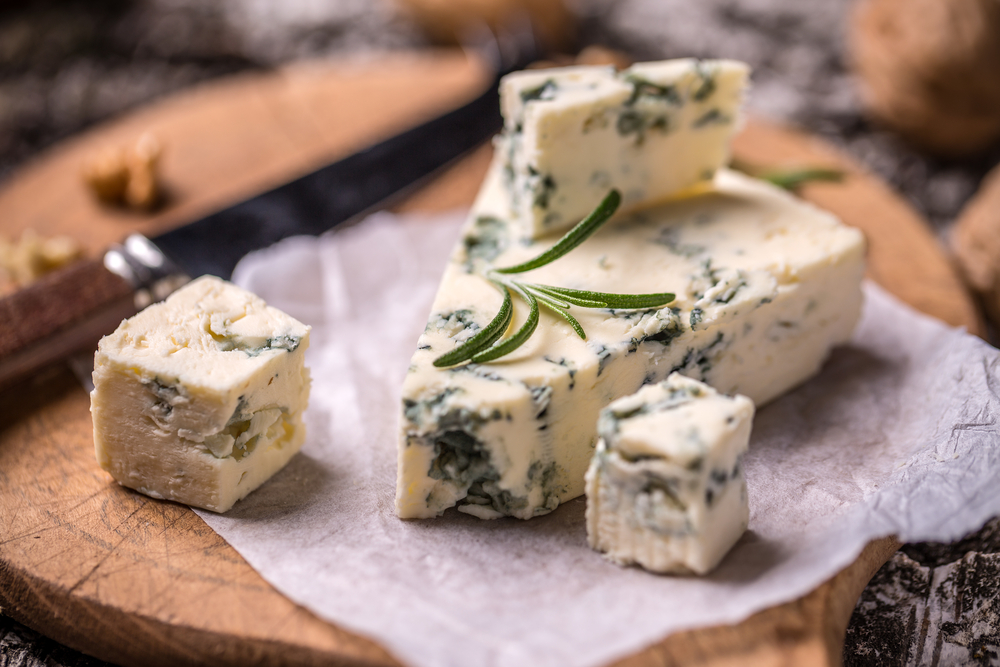
This cheese ripens uncovered for up to 90 days before its ready to be packaged for consumption. Roquefort cheese also goes well with wine, fruit, crackers, and baguettes.
3. Stilton
As a lesser known cheese from England, stilton is a perfectly marbled variety that is made from cow’s milk. Its flavor is nutty with a creamy texture that widely resembles the look and taste of bleu cheese.
Bleu cheese is also known for its characteristic smell, which stilton is able to mimic nicely. If you want to add a creamy texture to your dish, you can rely on stilton cheese to accomplish this, as well. You’ll find stilton on many cheese boards or paired with apples, walnuts, or honey for a decadent treat.
4. Danish Blue
Also called Danablu, Danish blue cheese is made from cow’s milk and encompasses the signature blue veins that traditional bleu cheese is notorious for. Pungent flavors that are sharp give way to a saltiness and richness that can’t be replicated. The flavor of Danish blue only gets more intense as time goes on, too.
Although it is creamy and rich, its flavor is more mild than that of bleu cheese. Those who don’t care for the strong flavor of bleu cheese will find Danish blue suits them just fine.
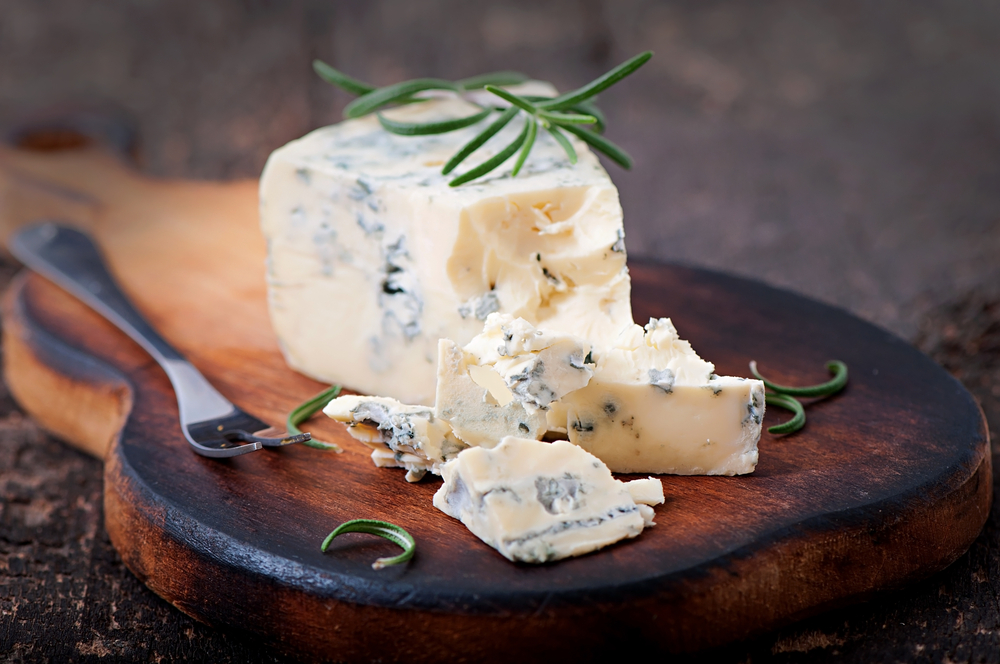
5. Maytag Blue
Originally developed as an alternative to roquefort cheese, Maytag blue is made using cow’s milk and is ripened to perfection after a period of six months. Made in small batches to ensure good quality, Maytag blue can be a hard to find delicacy.
Crumbly and dense, the texture of Maytag blue will remind you of the similar qualities that can be found in bleu cheese. Pungent and tangy, some individuals describe Maytag blue as having a lemony taste, too.
6. Feta
Commonly found atop salads, feta cheese has the strong flavor and pungent smell bleu cheese is also known for. Although it doesn’t have the characteristic veins of bleu cheese, it is just as crumbly and moist as well-known bleu cheese versions.
Known as a Greek cheese, Feta can be derived from goat’s milk or sheep milk. It is soft, yet flavorful and can be used in a variety of dishes as a protein powerhouse. Feta is known for its mildness and affordability over bleu cheese, too.
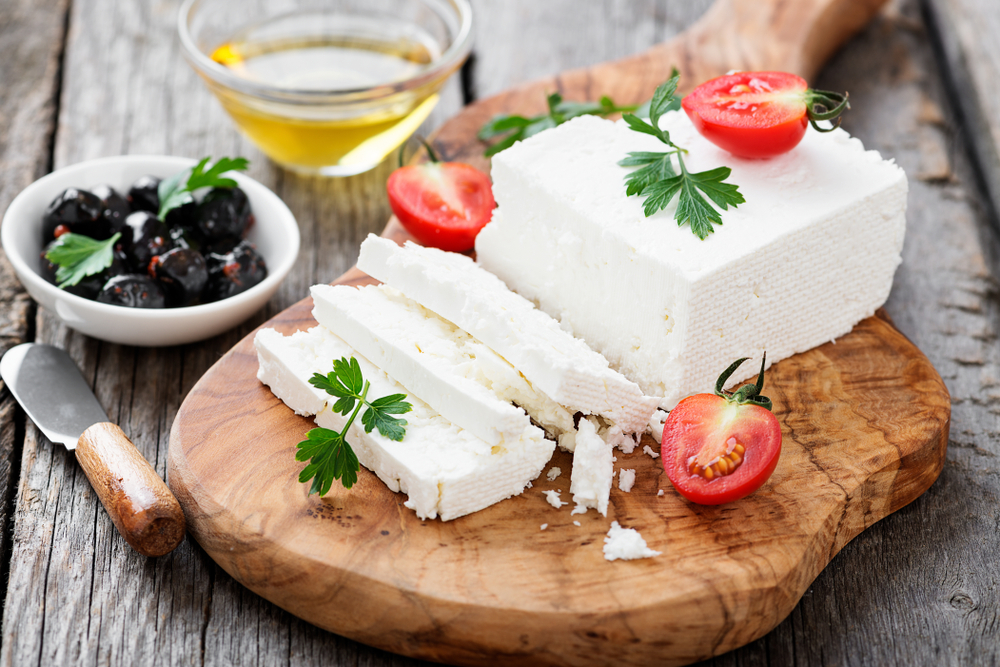
7. Cheddar
Perhaps the biggest difference you’ll find between cheddar cheese and bleu cheese are their texture and appearance. While bleu cheese is crumbly with a white and blue hue, cheddar can be found shredded or as a solid block of orange coloration. Cheddar cheese melts nicely while bleu cheese is more refined in its taste.
Cheddar is more versatile in its use and is preferred in baking, whereas bleu cheese is used as a charcuterie board taste or as a topping. Yet, if you’re looking for the tangy, sharp taste that bleu cheese is known for, you can count on cheddar to provide it. Sharper varieties work well in place of bleu cheese. Some even think there is a comparison between American and white cheese and bleu cheese in certain uses.
8. Parmesan
Parmesan cheese is quite different from bleu cheese in its look and texture, yet it provides that crisp and palatable taste that everyone loves about bleu cheese. Its sharp taste is one way in which it can be a valid replacement for bleu cheese.
However, in every other way, bleu cheese and parmesan are quite different. From their texture to their look, each one has its own unique uses. Both work quite well as salad toppings, though.
Overview of Bleu Cheese Substitutes
No matter which of these bleu cheese replacements you choose, each one has its own usefulness. Although they may vary in texture, taste, and color, these alternatives are a great choice for a bleu cheese replacement.



